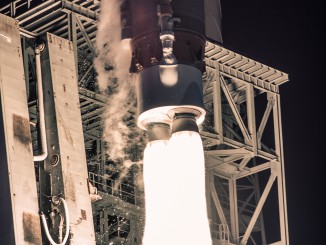Starlink and the Race for Global Satellite Internet: How SpaceX Sparks a New Era of Connectivity
The global demand for fast, reliable internet access has driven remarkable advancements in satellite technology. At the forefront is Starlink, SpaceX’s ambitious satellite constellation. Its rapid expansion is reshaping how the world connects, especially in remote or underserved regions. This article explores how Starlink is changing the landscape of global connectivity and catalyzing fierce competition in the satellite internet sector.

What is Starlink, and Why Is It Important?
Starlink, operated by SpaceX, is a massive constellation of satellites orbiting in low Earth orbit (LEO). Its purpose is to provide high-speed internet access across the globe, including regions where traditional broadband infrastructure is unavailable. Unlike fiber or cable connections, Starlink can reach remote communities, boats, airplanes, and even war zones.
By mid-2025, Starlink had already amassed millions of users worldwide, offering a real alternative to slower or less accessible broadband options. Its growing popularity highlights a pressing need for dependable connectivity in today’s digital-first world.
The New Space Race: Starlink vs. Emerging Rivals
Starlink may be the current leader in satellite internet services, but the competitive landscape is evolving rapidly. One of the most notable challengers is Amazon’s Project Kuiper. Recently, Amazon launched its inaugural batch of satellites, signaling a direct challenge to Starlink’s dominance. Project Kuiper aims to establish a constellation of over 3,200 LEO satellites to deliver high-speed internet worldwide. While Amazon’s system is in its early stages, the rapid launch schedule shows the company’s dedication to closing the gap with Starlink. You can read more about Amazon's strategy and challenges in the CNN feature on the billionaires’ battle to beam internet to Earth.
The momentum in this industry is staggering. In recent record-breaking events, multiple rockets—many carrying Starlink satellites—have launched within hours of each other. The expansion of both Starlink and its competitors means rockets are soaring at a pace never seen before. Space.com details this high-speed phase in their article, "6 rockets launch in less than 24 hours", showcasing how megaconstellations like Starlink are setting new records in spaceflight.
How Starlink and Project Kuiper Work
Starlink and Project Kuiper both rely on extensive networks of satellites in low Earth orbit (LEO). LEO satellites provide a distinct advantage because their proximity to the surface results in low-latency connections and faster data transmission compared to traditional geostationary satellites.
- Starlink’s Network: Operates at altitudes of around 340 miles (550 kilometers). It connects homes, businesses, RVs, and even aircraft—turning nearly any location into a node on the global internet.
- Kuiper’s Ambitions: Amazon’s satellites will orbit slightly lower, at about 280 miles (450 kilometers), with a goal to rapidly reach more customers as the constellation grows. According to Spaceflight Now's coverage of Amazon’s first production launch, Kuiper's initial service will start when at least 578 satellites are in place.

Opportunities and Challenges in Satellite Internet Expansion
The promise of universal access brings both opportunities and challenges. Starlink has demonstrated the power of its network in critical situations—such as supporting communications in remote combat zones or natural disasters. This flexibility is a game-changer for governments, emergency responders, and everyday users alike.
However, building these vast constellations is complex and costly. Launching thousands of satellites requires significant upfront investments. Companies must overcome technological, financial, and regulatory barriers to stay competitive. With operations expanding fast, there are also concerns about satellite traffic in orbit and the sustainability of space.
The Future of Global Connectivity
As Starlink and its rivals race to connect the world, consumers and enterprises stand to benefit from increased choices and better internet access. Increased competition could push prices down and accelerate innovation in satellite communications technology.
Looking ahead, the next few years will be pivotal. New launches, ongoing technological development, and strategic partnerships are set to intensify the space-based internet revolution. Whether you’re in a bustling metropolis or a remote wilderness, the future of global connectivity may soon be just overhead.
Ready to learn more? Stay updated on the cutting edge of space-based broadband—explore Space.com’s in-depth launch coverage, and see how titans like Starlink and Project Kuiper are reshaping how we access the internet.